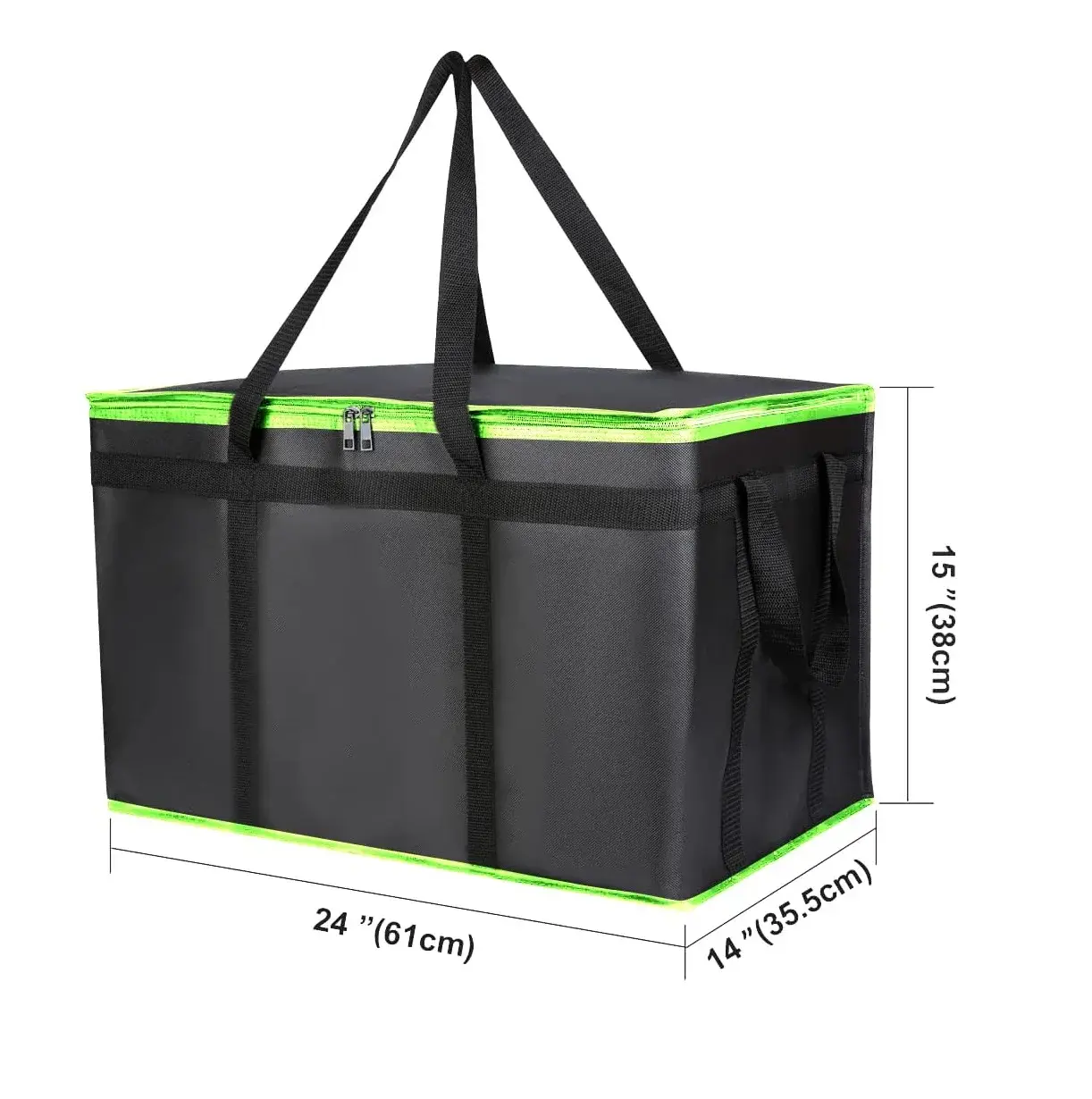What Are the Benefits of Insulated Canvas Bags vs. Plastic Bottles?
Insulated canvas bags offer significant environmental benefits by reducing plastic waste, enhancing durability, using sustainable materials, promoting recyclability, and supporting local economies.
- Reduction in Plastic Waste: These bags significantly decrease the demand for single-use plastic bottles and disposable bags, thereby mitigating the environmental impact of plastic production and disposal.
- Increased Durability: Designed to last for many years, these bags reduce the frequency of replacements, lowering the overall environmental footprint compared to single-use options.
- Sustainable Material: Made from organic cotton, which requires less water and fewer chemicals than conventional cotton, insulated canvas bags contribute to a more sustainable textile industry.
- Recyclability and Biodegradability: At the end of their useful life, these bags can be recycled or decompose, reducing their long-term environmental impact.
- Support for Local Economies: By choosing to use and purchase these bags, consumers support local businesses that produce or sell them, fostering a more resilient and equitable local economy.
Reducing Plastic Waste with Insulated Canvas Bags
Insulated canvas bags are a practical and sustainable alternative to disposable plastic containers, particularly for food and beverages. Their durability, reusability, and availability in various designs promote long-term economic savings and reduced plastic waste. To enhance adoption, strategies such as educational campaigns, creative partnerships with businesses, and technology integration, such as apps and workshops, can be employed.

Impact of Insulated Canvas Bags on Wildlife
The use of insulated canvas bags significantly reduces plastic waste, thereby decreasing litter in urban and coastal areas. This reduction minimizes the risk of ingestion and entanglement for wildlife, such as seabirds and sea turtles. For instance, a coastal community that switched to insulated canvas bags reported a 50% reduction in marine debris. Such efforts contribute to healthier habitats and support long-term conservation.
Comparison of Insulated Canvas Bags and Plastic Bottles
Insulated canvas bags and plastic bottles serve as alternatives to single-use disposable containers, each with distinct advantages and drawbacks. Insulated canvas bags are durable, reusable, and reduce waste, promoting a sustainable lifestyle. However, their production requires more resources and energy, and they are heavier, which makes them less convenient for everyday use. Conversely, plastic bottles offer portability and convenience but carry environmental concerns. Innovations in biodegradable plastics and advanced insulation materials are gradually addressing these issues and making reusable products more practical and appealing.
Everyday Uses and Market Demands for Insulated Canvas Bags
Insulated canvas bags have become a popular and versatile choice due to their durability and sustainability. They excel in everyday uses such as carrying lunches, keeping beverages at the desired temperature, and transporting gym gear. The production process typically involves eco-friendly materials like heavyweight cotton and recycled fibers, enhancing both durability and sustainability. Market demands are driven by consumer awareness of environmental issues and the desire for reusable, multi-purpose items, leading retailers and manufacturers to offer a range of designs and colors.
Promoting Insulated Canvas Bags in the Community
Promoting insulated canvas bags in the community enhances environmental sustainability and public health. By reducing single-use plastic waste, these bags decrease chemical exposure and associated health risks. Local businesses benefit economically by offering durable, high-quality products, reducing inventory costs, and building a loyal customer base. Technology, such as mobile apps and smart solutions, can make sustainable choices more convenient. Governments can support these efforts through policies, subsidies, and educational initiatives, fostering a stronger and healthier community.
Incorporating Insulated Canvas Bags in Sustainable Packaging
Incorporating insulated canvas bags into sustainable packaging strategies offers environmental benefits, including superior durability and reduced waste. These bags are robust and can withstand repeated use, lowering the frequency of replacements. This reduces the carbon footprint associated with manufacturing and discarding single-use plastic bottles. Additionally, insulated canvas bags keep contents at the right temperature, extending the shelf-life of perishables. The manufacturing process typically involves biodegradable natural fibers, further reducing environmental impact. Addressing challenges such as higher production costs and storage space is crucial. Highlighting long-term cost savings and practical advantages can incentivize businesses to adopt these sustainable options.
FAQs Related to Environmental Benefits and Popularity of Insulated Canvas Bags
What are the environmental benefits of insulated canvas bags?
Insulated canvas bags offer several environmental benefits, including reducing plastic waste, enhancing durability, using sustainable materials, promoting recyclability, and supporting local economies.How do insulated canvas bags help reduce plastic waste?
Insulated canvas bags significantly decrease the demand for single-use plastic bottles and disposable bags, thereby reducing the environmental impact of plastic production and disposal.What impact do insulated canvas bags have on wildlife?
The use of insulated canvas bags significantly reduces plastic waste, thereby decreasing litter in urban and coastal areas, which minimizes the risk of ingestion and entanglement for wildlife such as seabirds and sea turtles.How do insulated canvas bags compare to plastic bottles in terms of environmental impact?
Insulated canvas bags and plastic bottles serve as alternatives to single-use disposable containers. Insulated canvas bags are durable, reusable, and reduce waste, though their production requires more resources and energy. Plastic bottles offer portability and convenience but carry environmental concerns.Why are insulated canvas bags popular in everyday uses and what are the market demands for them?
Insulated canvas bags have become popular due to their durability and sustainability, excelling in uses such as carrying lunches, keeping beverages at the desired temperature, and transporting gym gear. Market demands are driven by consumer awareness of environmental issues and the desire for reusable, multi-purpose items, leading retailers and manufacturers to offer a range of designs and colors.





